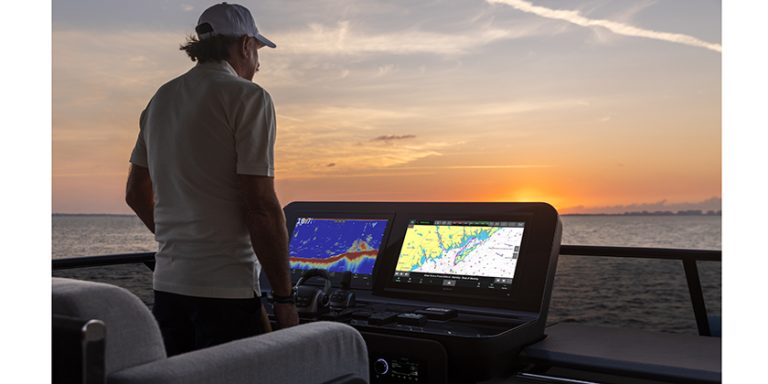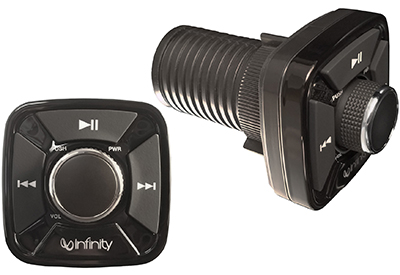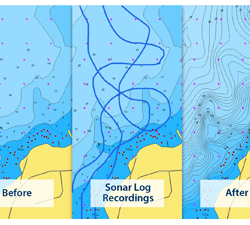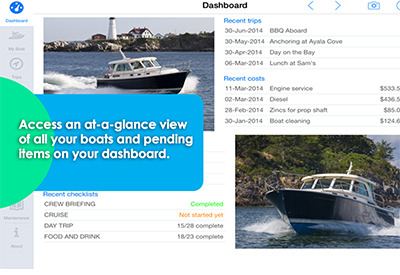Mobile Devices Link You to Your Boat from Anywhere On The Planet

Over the past two years, we have featured a number of articles focusing on the functional and performance benefits available through the universal NMEA 2000 protocols developed to enable a wide range of devices to all communicate with each other using one language.
Separate from that, there is now a rapidly growing interest in using mobile devices like smartphones and tablet computers in place of notebooks and desktop computers because they offer connectivity on the go using easily carried equipment. Also, the “cool factor” is very high!
These mobile devices can now access a wide range of connections including those on your boat, through Maretron's vessel monitoring and control systems software.
In the June issue of Canadian Yachting, we wrote about the excitement of social networking in recreational cruising navigation and how that will soon play out to mobile devices.
This month we had an opportunity to go on a boat with its owner and his electronics specialist to learn about how he plans to manage the boat remotely through his iPhone mobile device connecting via a new Maretron NMEA 2000 network.
To intrigue you a little bit, let me first say that this is not the owner’s only boat and this is not the only country where he goes boating. This gentleman and yachting enthusiast also owns a large trawler in Greece where he cruises the Mediterranean, but his business is based in Canada and he also loves to cruise Georgian Bay. From his offices in Canada, Europe and the United States, he will be able to monitor and control both his 56-foot trawler in Greece and his 48-foot express cruiser on Georgian Bay.
Owner Alex Kanaris contacted Brian Kelly at Bayland Enterprises, a second-generation marine electronics specialist and someone who has achieved a very high level of certification. Working together, they planned the systems for both boats. Then, Brian Kelly left his home port of Midland, Ontario, traveling to Greece on several occasions to work on the trawler at the same time as he refitted Kanaris’ Burns Craft express cruiser with the NMEA 2000 backbone by Maretron.
The express cruiser started life in 1993 as a Burns Craft, built-in Alabama, but with very European styling that remains fresh and contemporary even today. The boat had more than proven its worth over the years, cruising the Mediterranean for a long time before being shipped back to North America and coming to Canada, much loved but well-worn.
Alex made the decision to redo the boat. The hull was very solid and had proven it’s safety and comfort to Alex on many occasions. The lavish refit has freshened every aspect of the Burns Craft including being recently re-powered with a pair of Cummins 480 diesels. The interior is freshly done with a magnificent galley, very stylish salon and top-of-the-line upgrades from stem to stern including a hydraulic transom lift, all new upholstery, extensive teak decking, a big Onan generator, cockpit refreshment area with grill, satellite high-definition television – the works!
Of course, doing all that with 1993 wiring is unthinkable. Brian Kelly began by installing a Maretron NMEA 2000 backbone throughout the boat. With that in place, he can take “drops” that “T” off the main trunk to any NMEA 2000 device the owner wants to install.
In the engine room, Brian began by installing a pair of Maretron JDK 100 gateways that connect to the engines gathering NMEA 2000 information so it can be displayed on either the main Furuno NavNet 3D screen on the helm or elsewhere. A custom dashboard was fabricated for the boat in Miami and several key pieces were located safely inside the enclosure. Brian Kelly installed a pair of IPG [Internet protocol gateway] devices that have a USB connection available so the owner can plug into the gateway via a modem and the Internet in order to identify his own boat and tap into its systems.
Next, they included a switch indicator module [SIM box] on a panel at the helm. This can read the position of switches such as the magnetic latch on the cabin door, enabling you to determine if the door has been opened. Depending on how you set this up, the boat can literally text the owner to say somebody has come on board. Other devices that run through the SIM box are a fire alarm, high water alarm in the bilge; the owner also added a CO2 detector for safety in the cabin.
On this same panel, in the foot well under the wheel, is the DCR (direct current relay); this is one device in the system that connects to the owner’s mobile device. The DCR can switch up to 6 devices per box. In this case, the owner chose to control the lights on board and can easily switch on the courtesy footlights, the lights on the overhead arch, the LEDs that sparkle around the bow rail, the horn and more. But additionally, anything on board could be viewable remotely depending on the software the owner purchases – N2KView Basic or N2KView Platinum.
There are several “magic boxes” (as I think of them) that can be installed. Another that Brian Kelly added is a run indicator module (RIM) that can monitor any electrical load. In this case, the forward and aft bilge pumps were selected and the system can keep a record of where and when the pump went on.
Some of the possibilities are more exciting than others. Then again, some are very practical. If you were “living on the hook” for a weekend using mainly 12-volt power and wanted to manage your resources carefully, you could monitor the loads. Brian switched on one of the LED lights and we immediately saw that it was consuming 0.2 amps. You can add the LEDs on the overhead arch, or cabin interior lighting. Another convenience is being able to add a sensor that gives you ambient temperature, or wind speed.
Other measures are more safety-oriented. Alex’s Burns Craft now has an anchor watch feature that sounds an alarm if he drags his anchor at night. (Wouldn't you sleep more soundly knowing you will be alerted if the boat is moving.)
It really is practical and sensible to have high water alarms, intruder alarms or temperature alarms guarding your yacht when it’s halfway across the world. No one wants an insurance claim. Imagine being able to call your marina to get help as soon as you can even if that marina is in Greece and you are in Canada.
From your car on the way to the boat, turn the heat or the A/C on. Monitor any device that consumes current. See if the refrigerator is running or something has accidentally been left on. Then, switch it off!
With an NMEA 2000 system and the appropriate onboard systems installed and set up to be controlled on your smart phone, you are never very far from your boat!
By Andy Adams





























